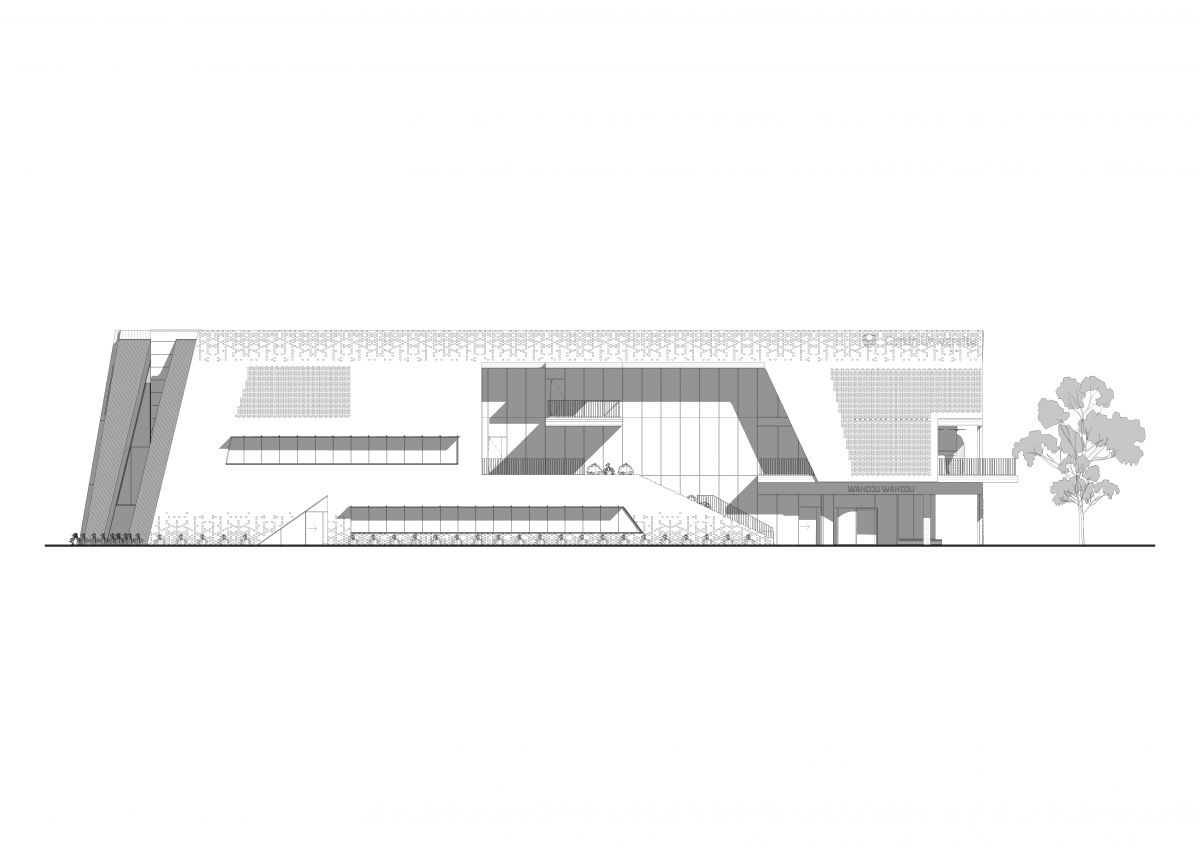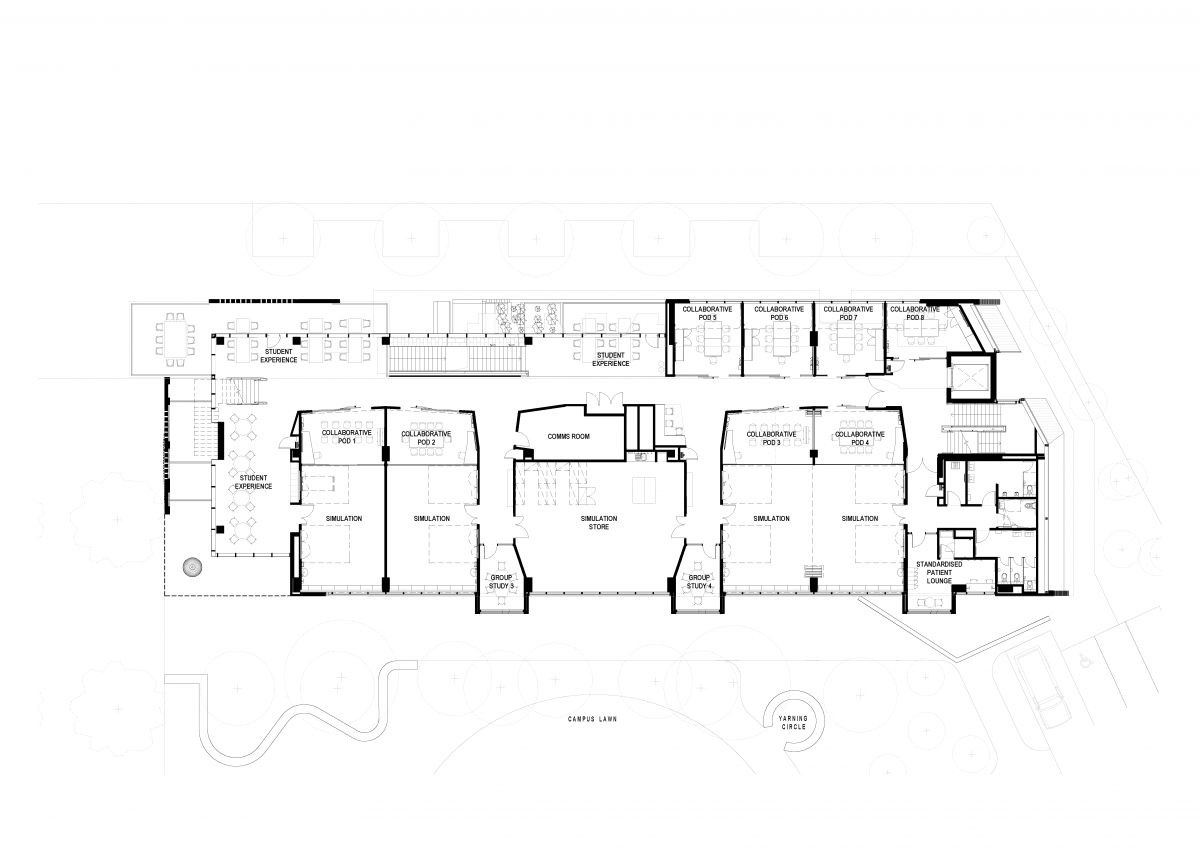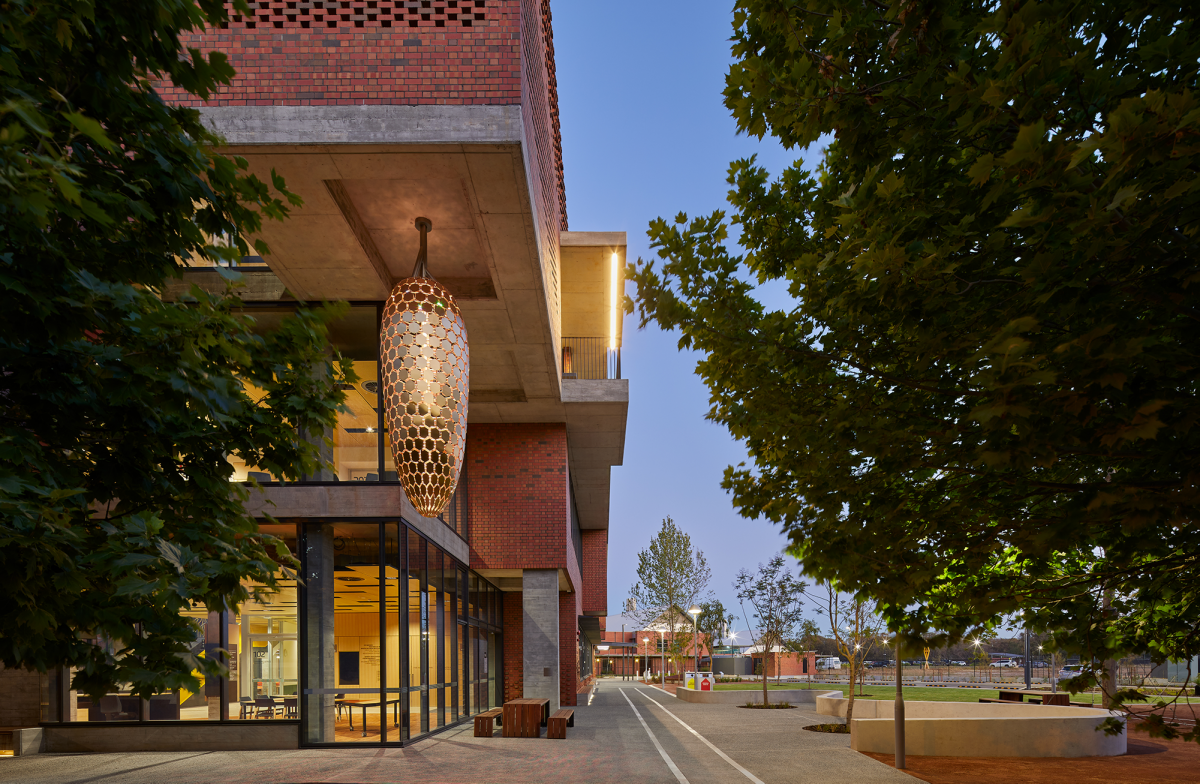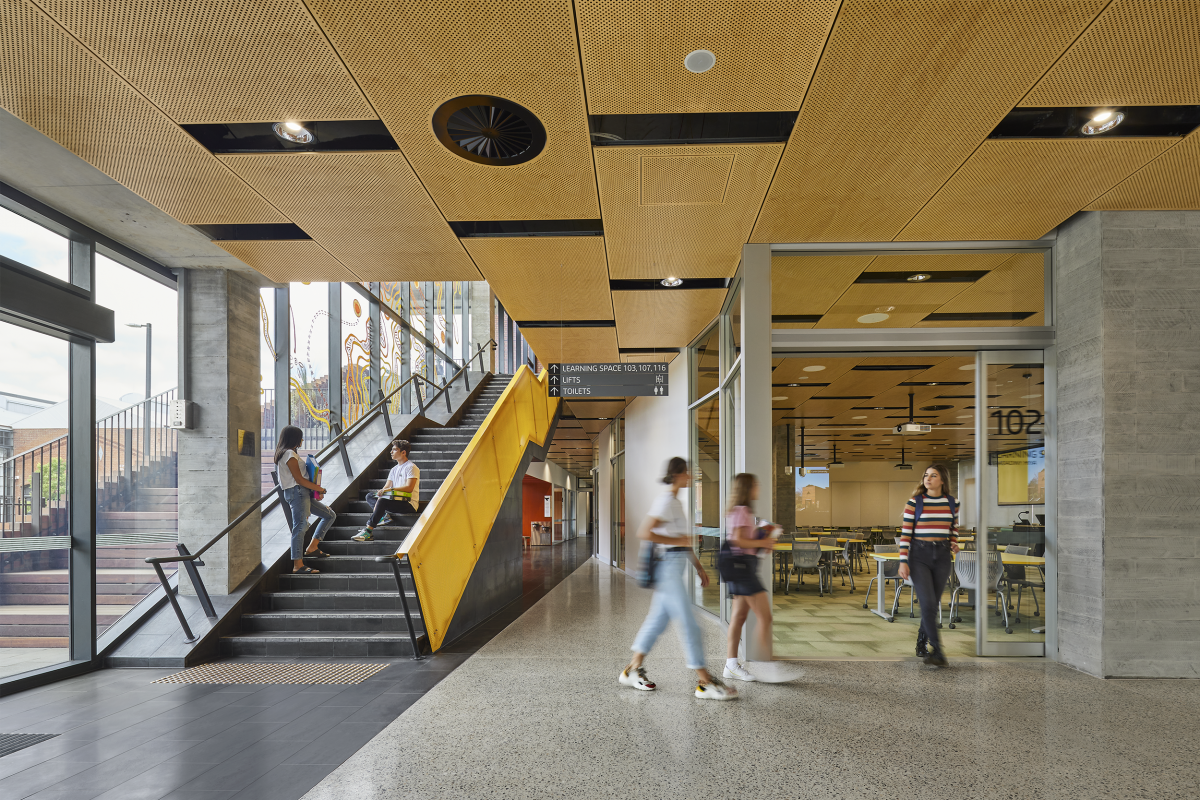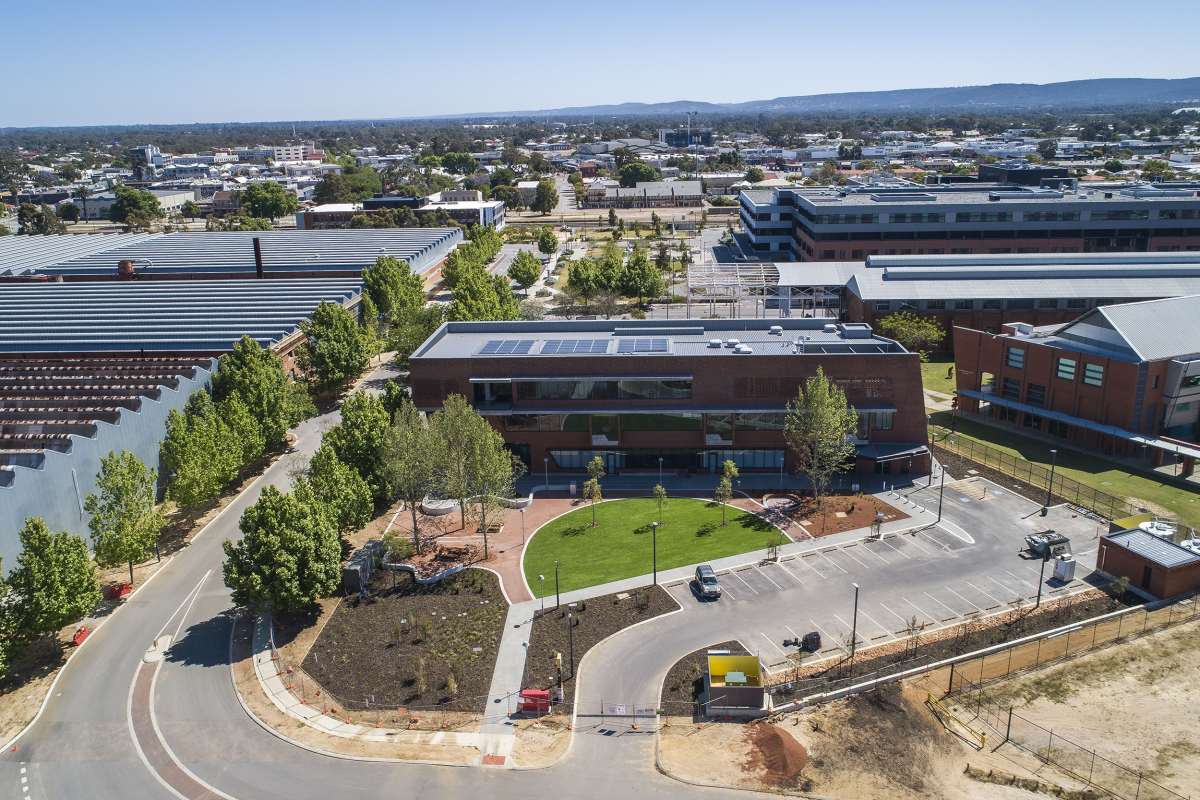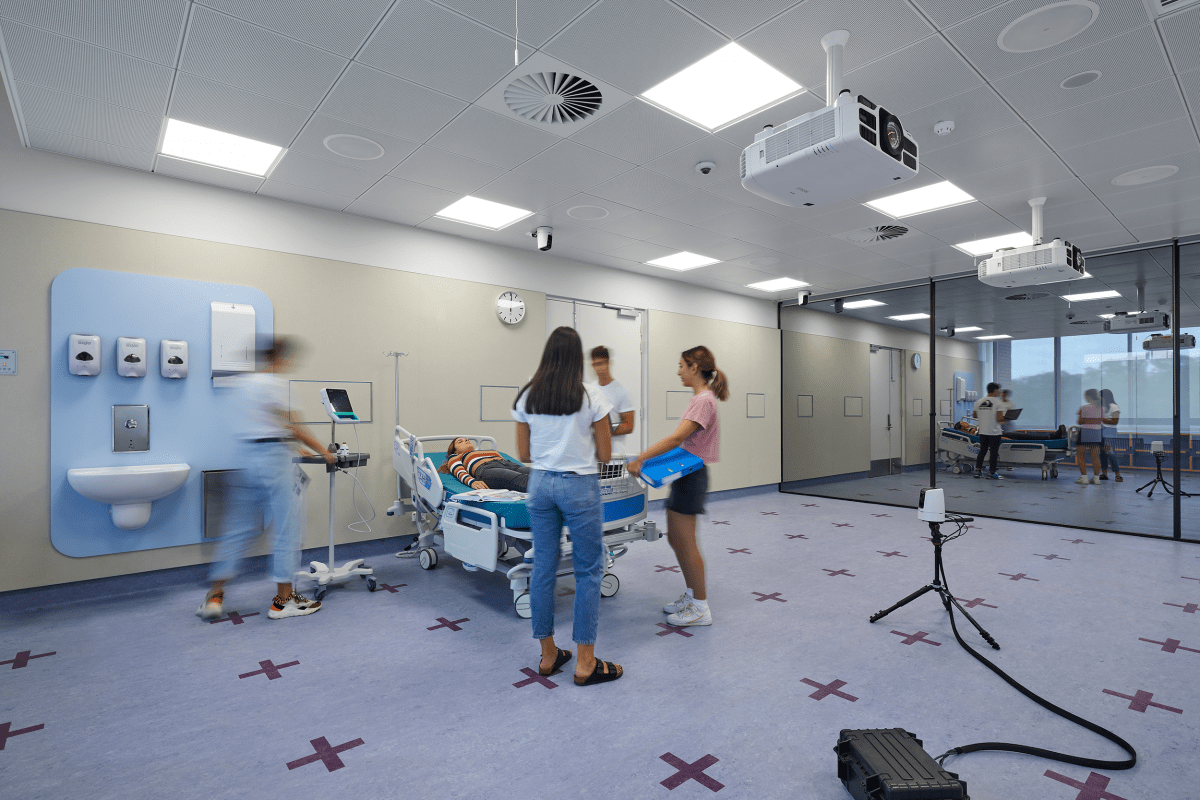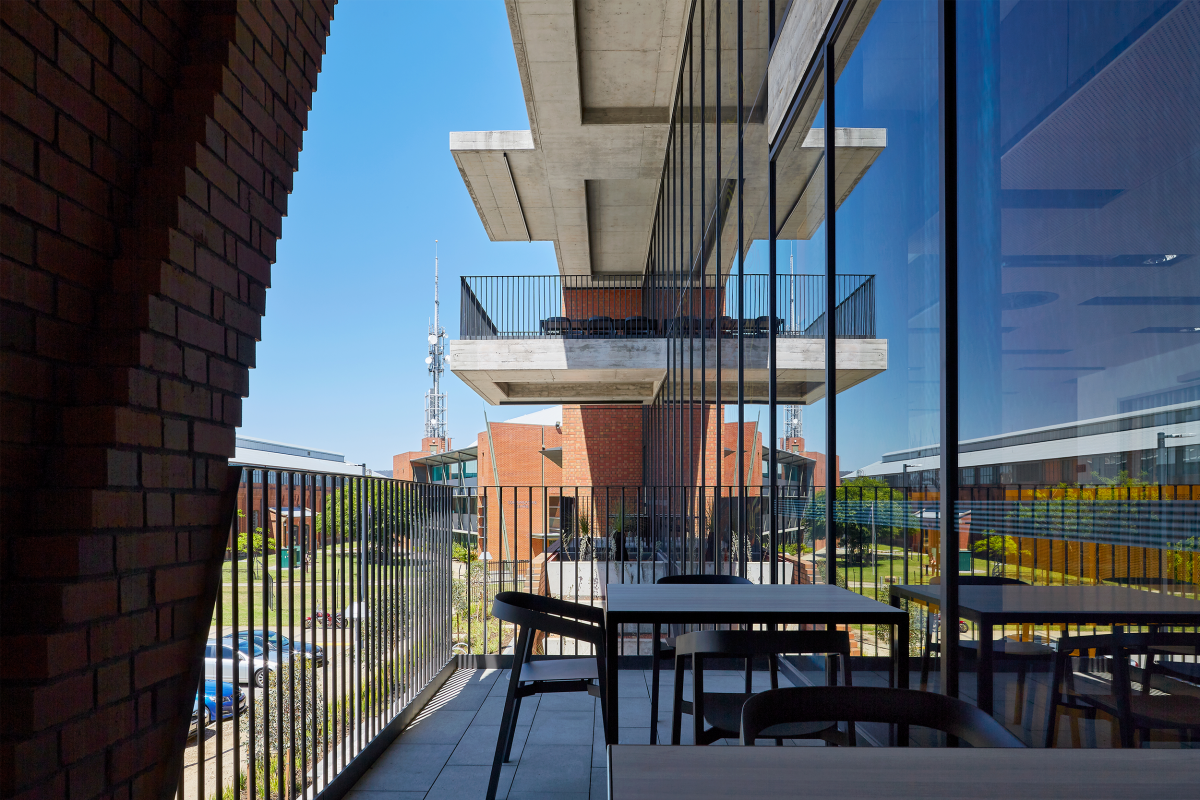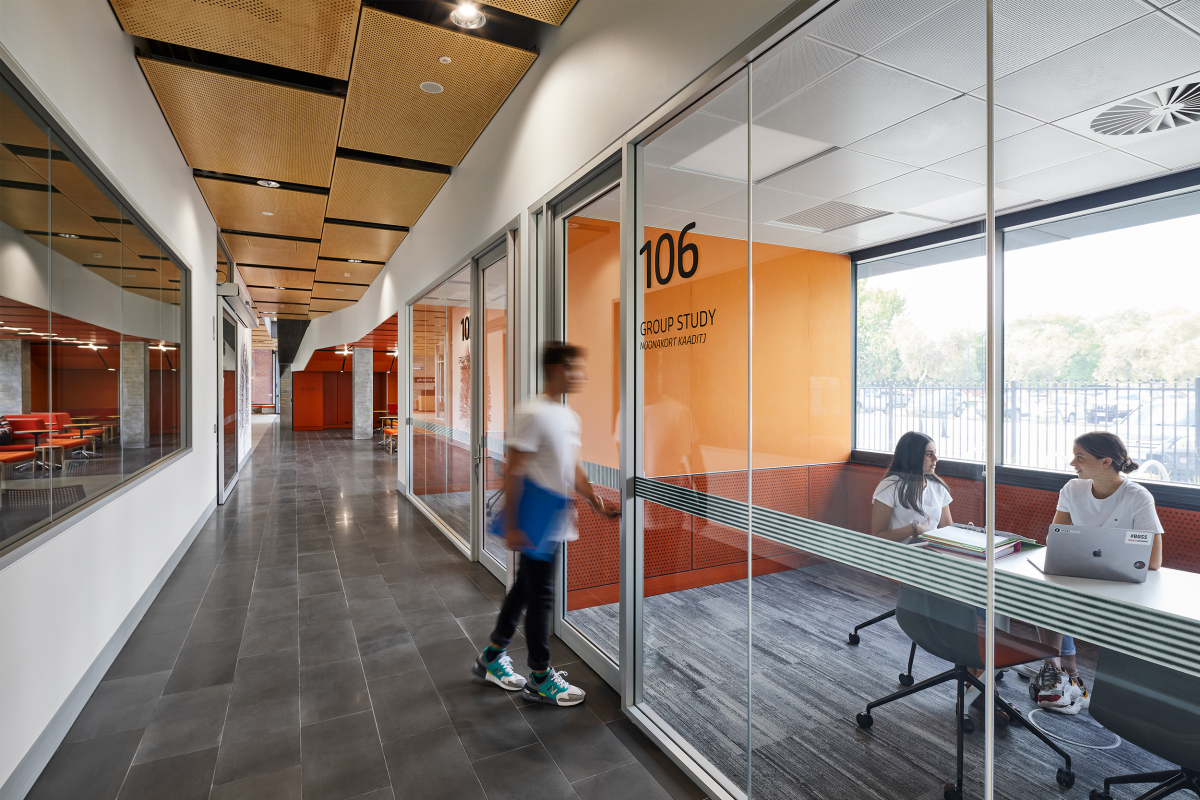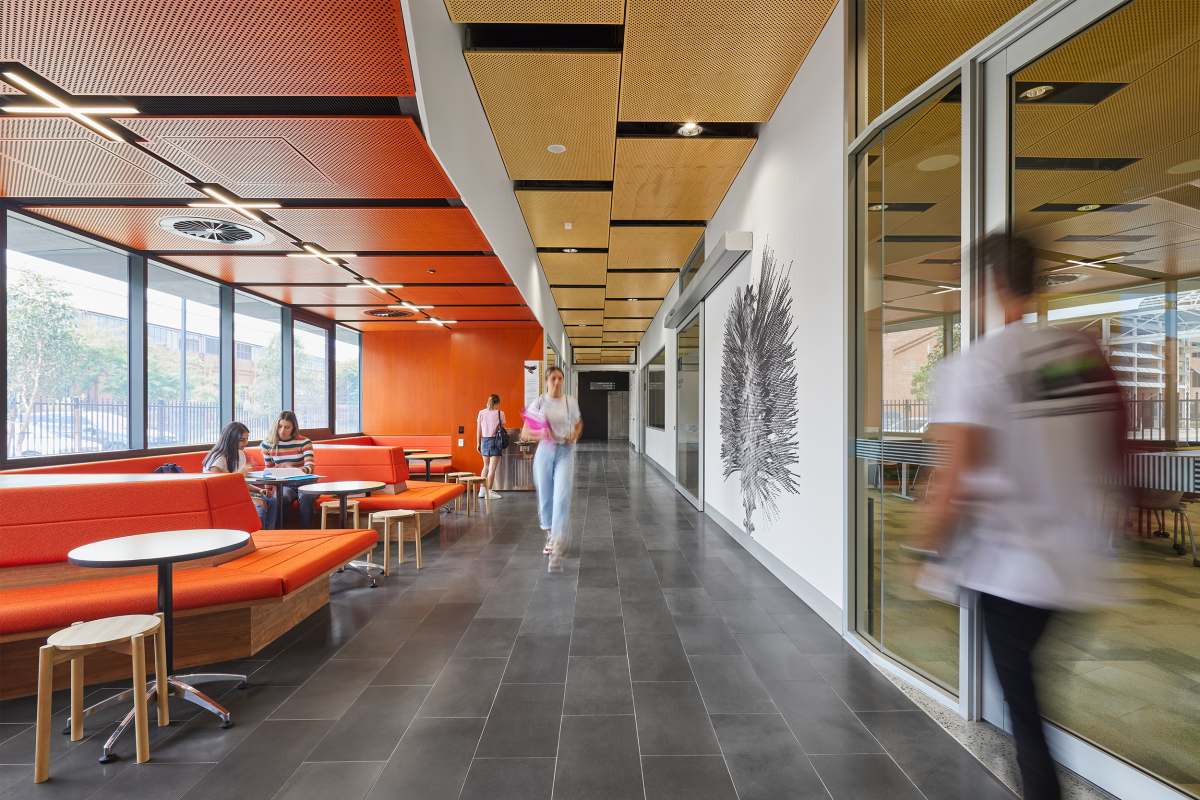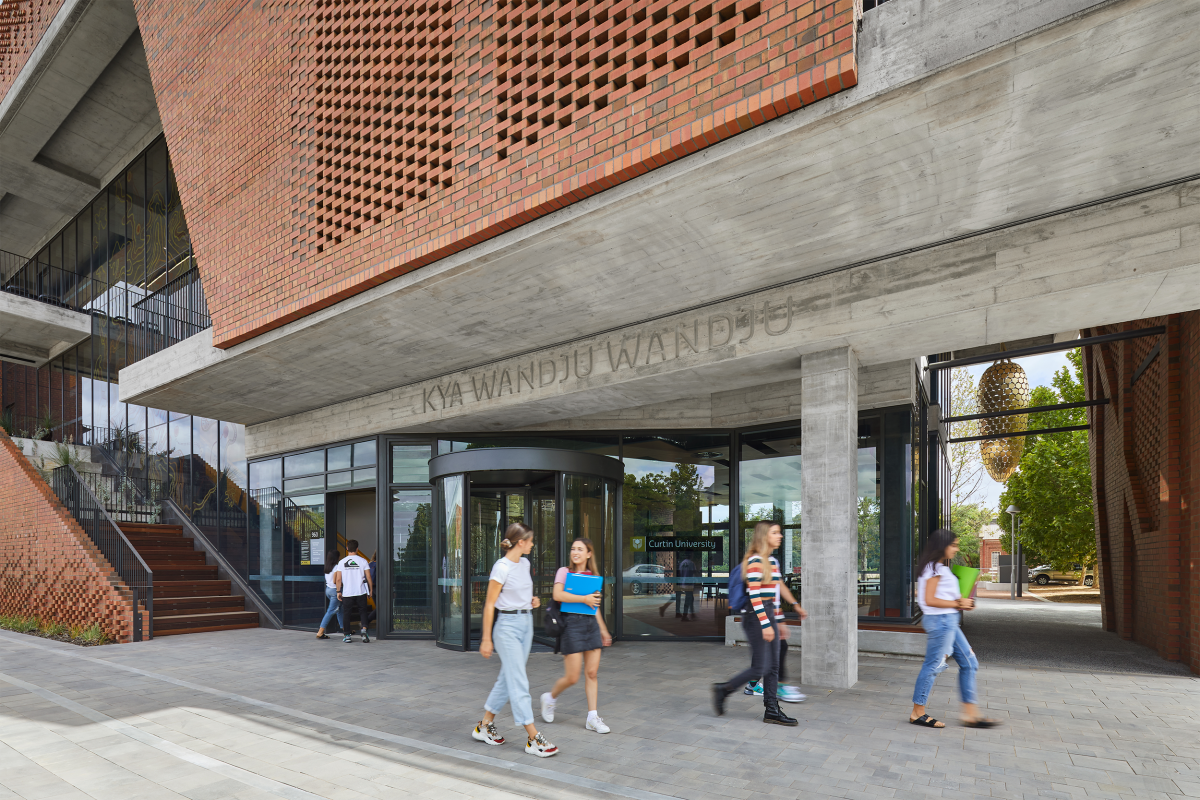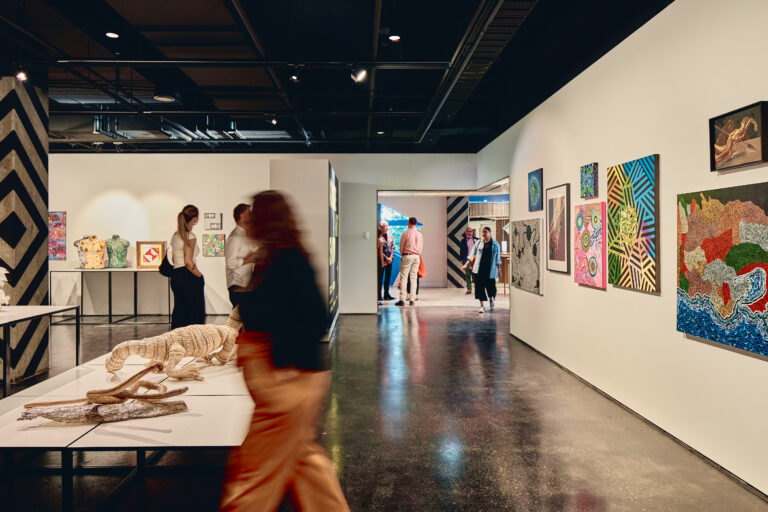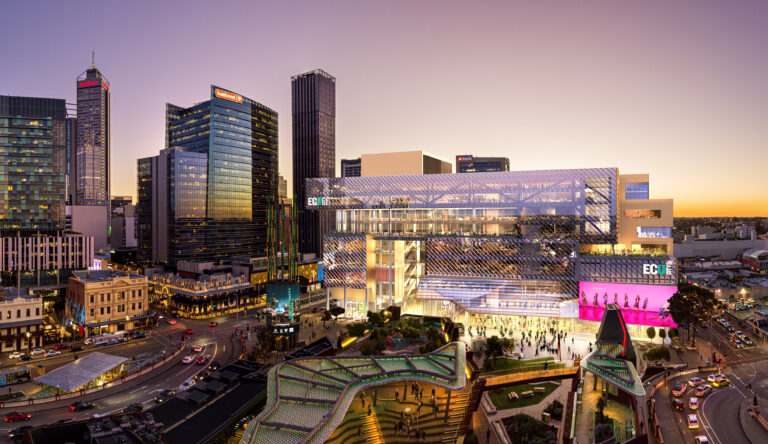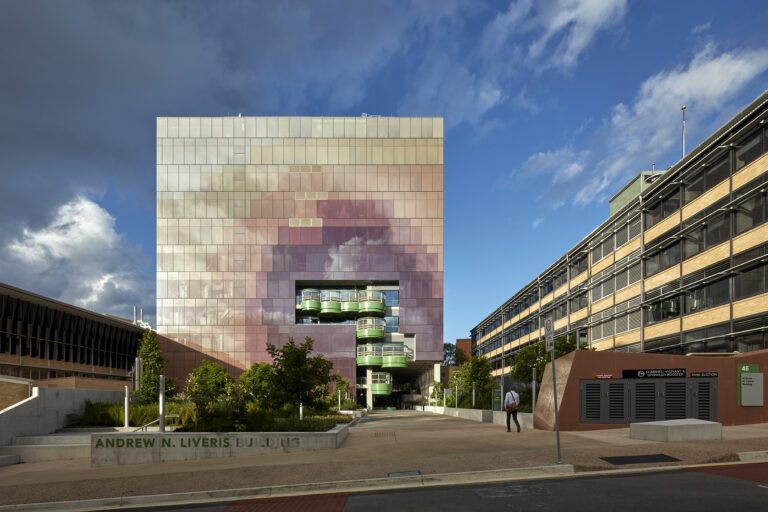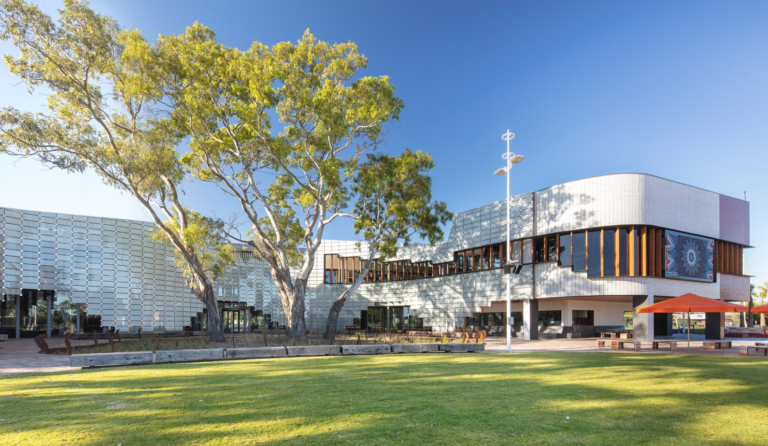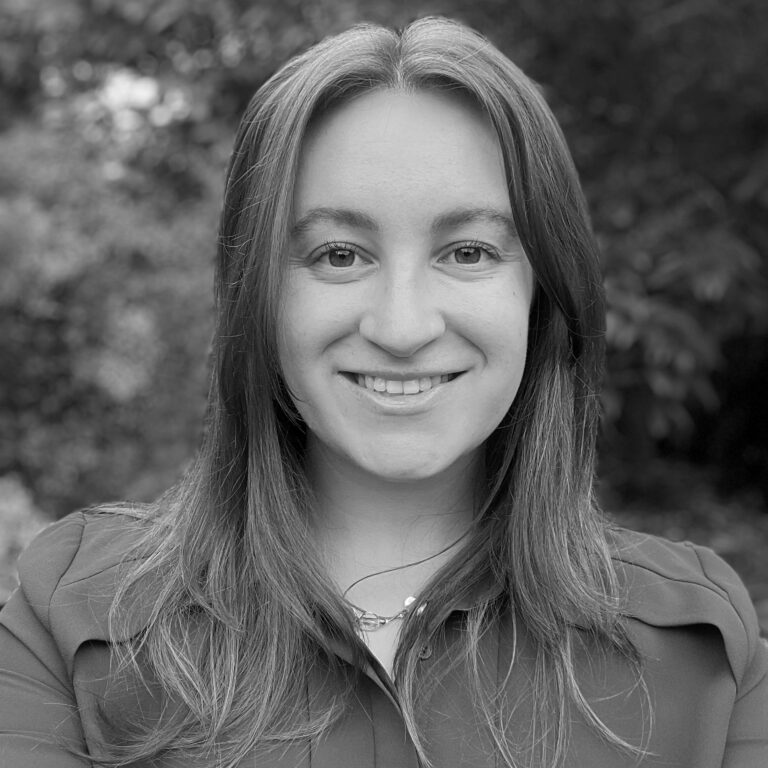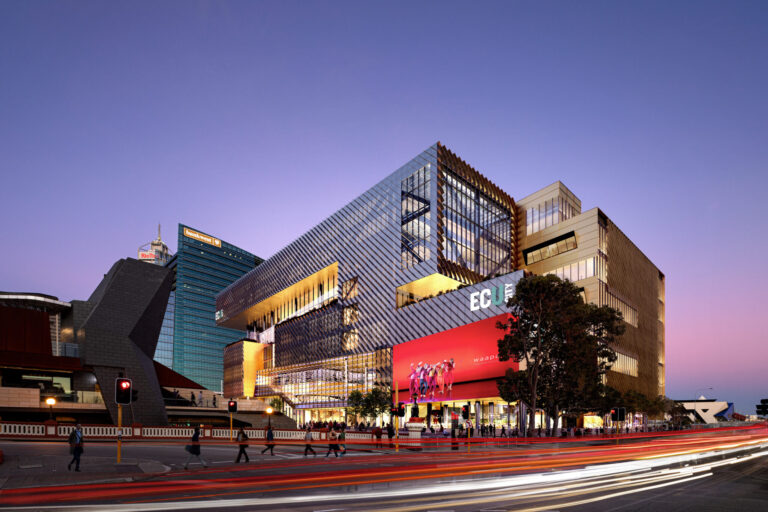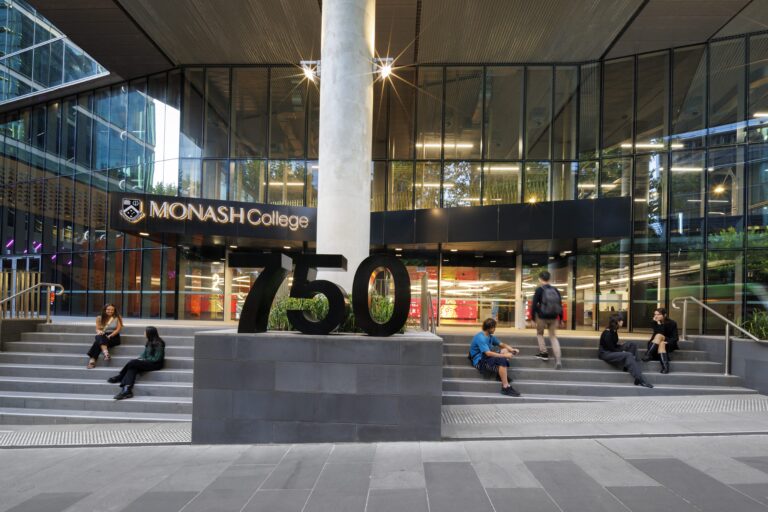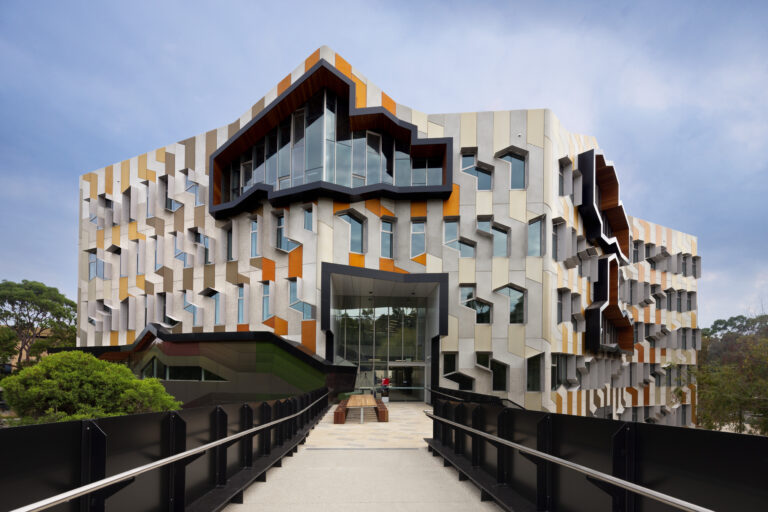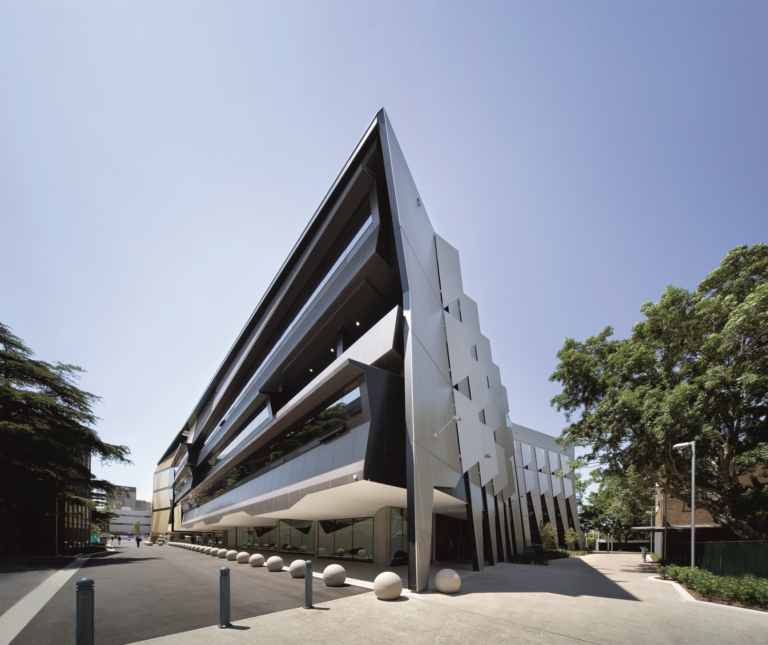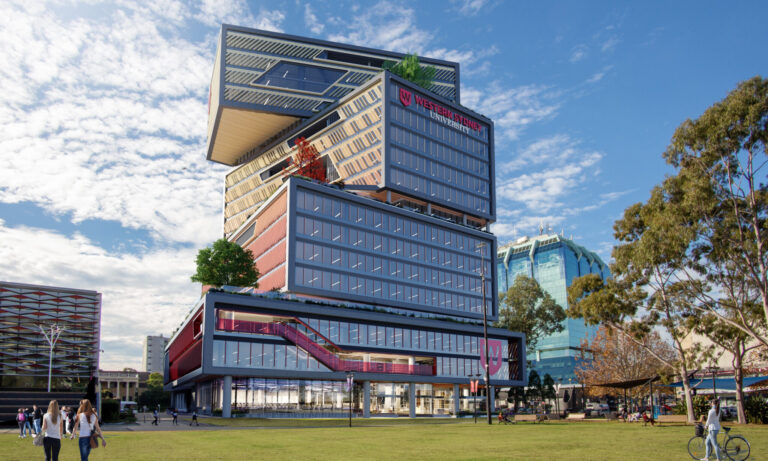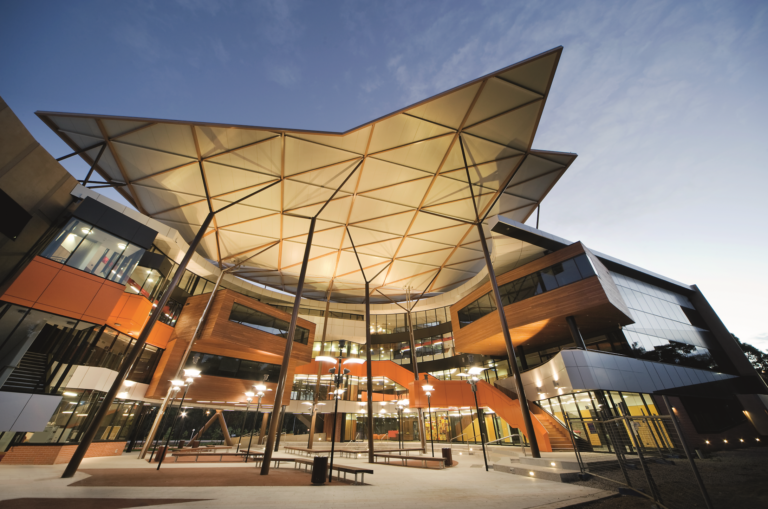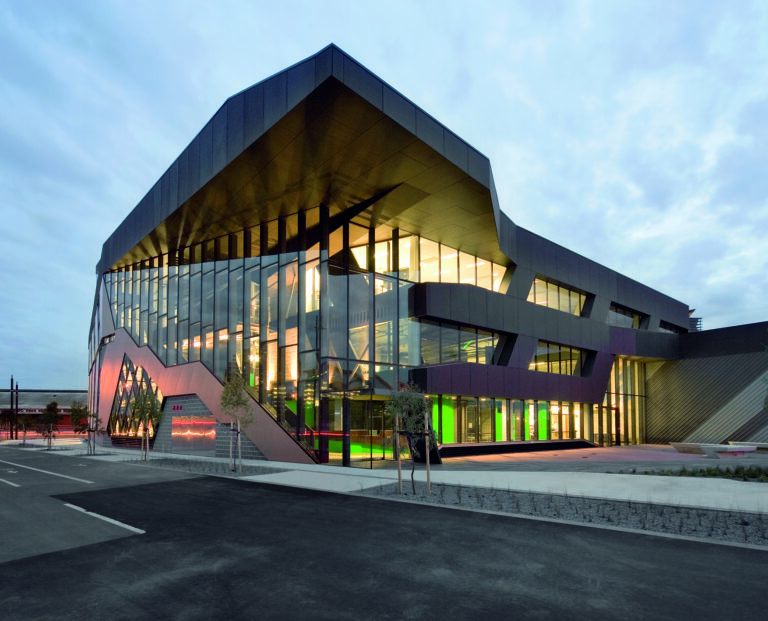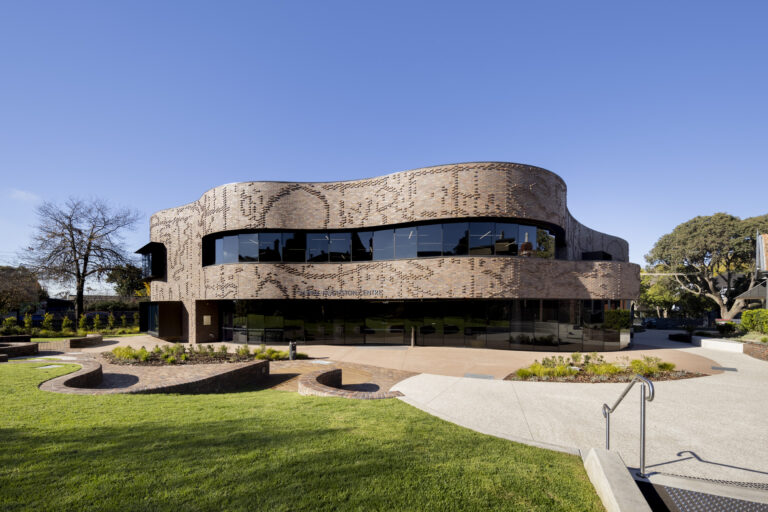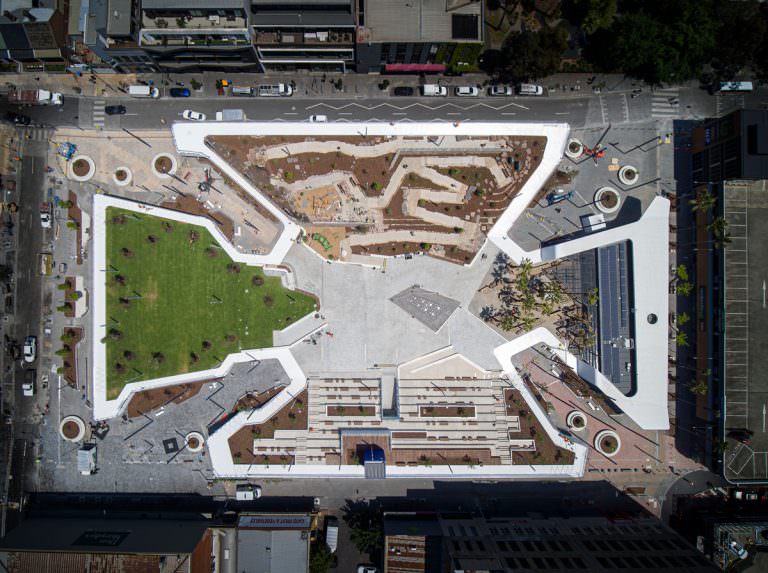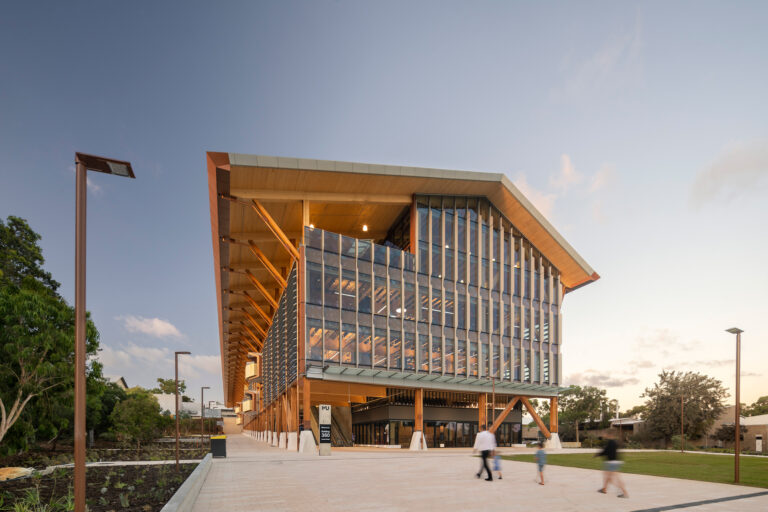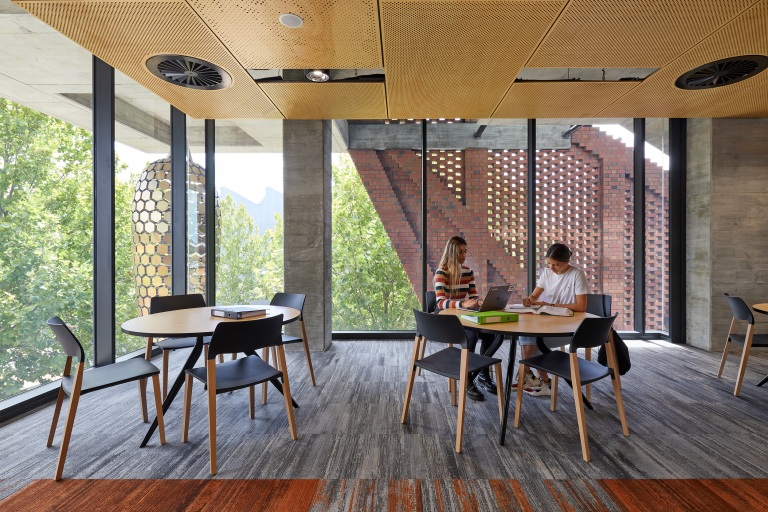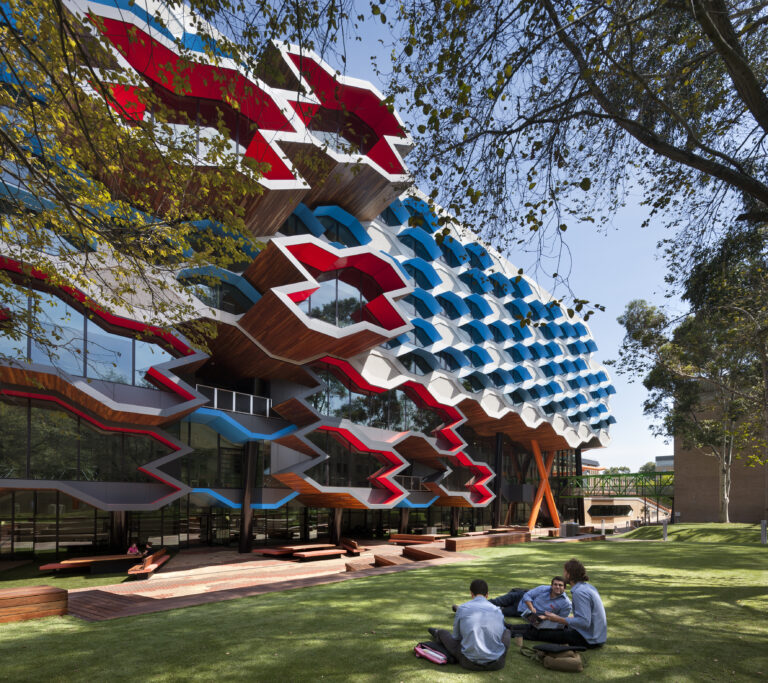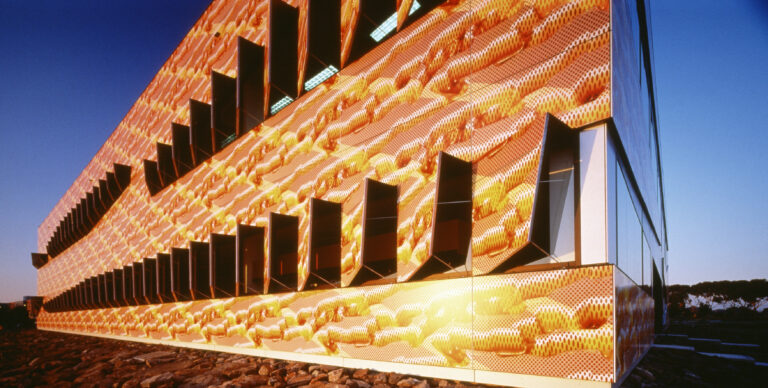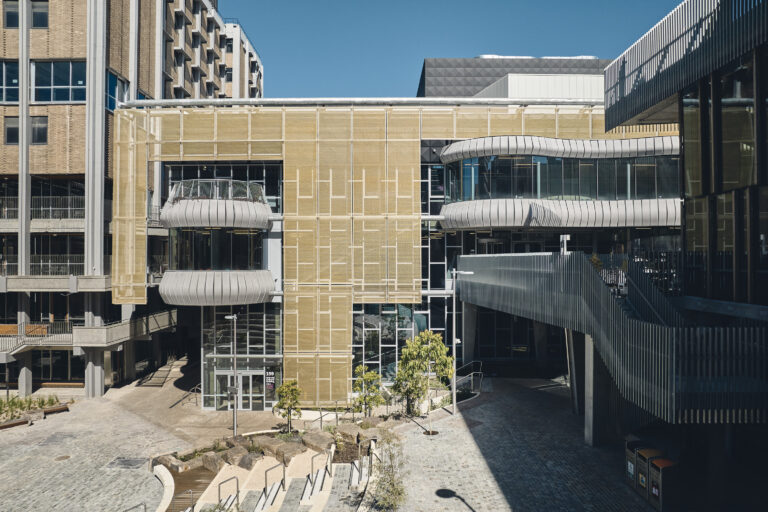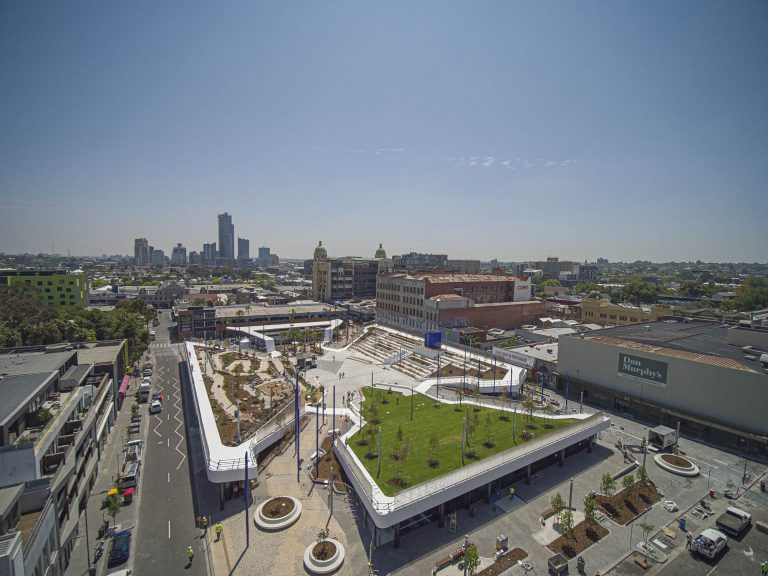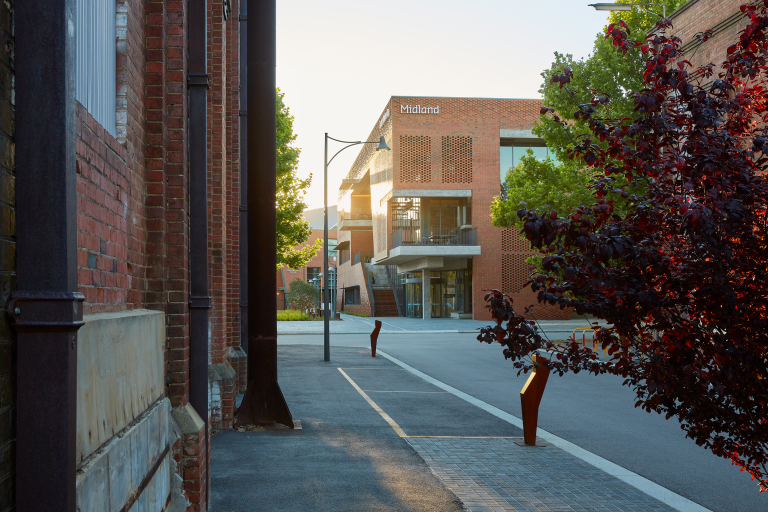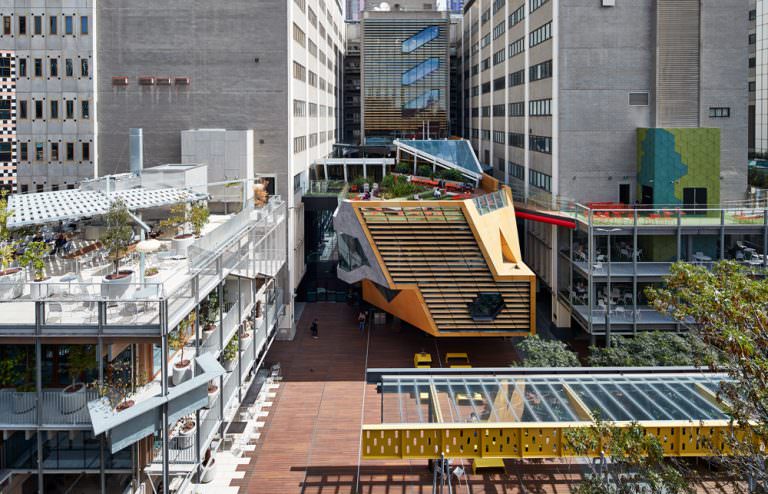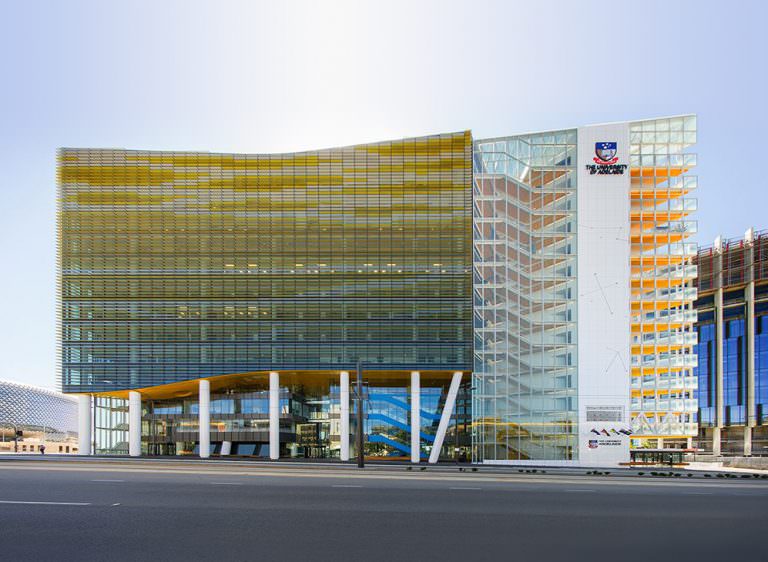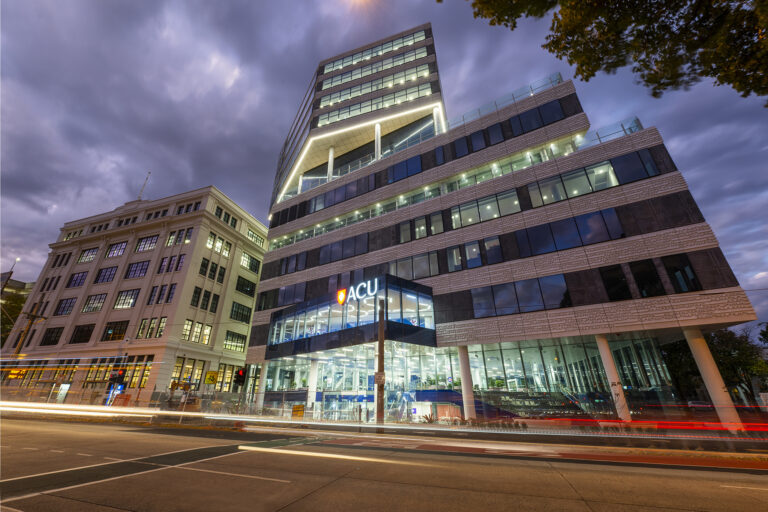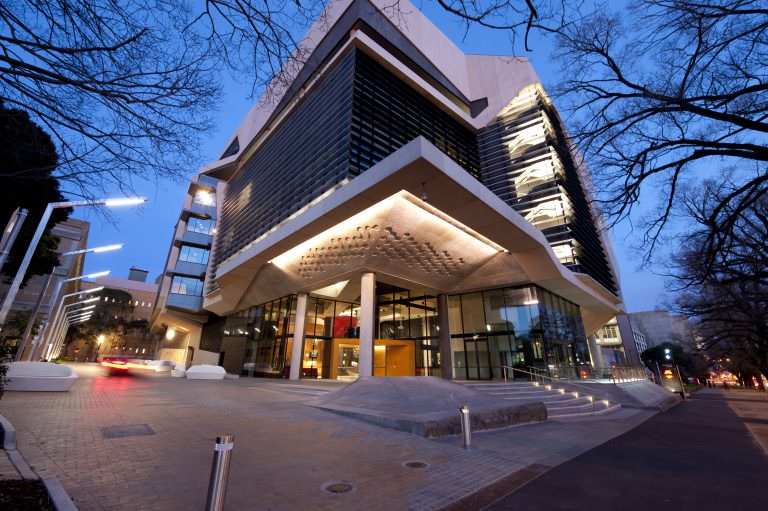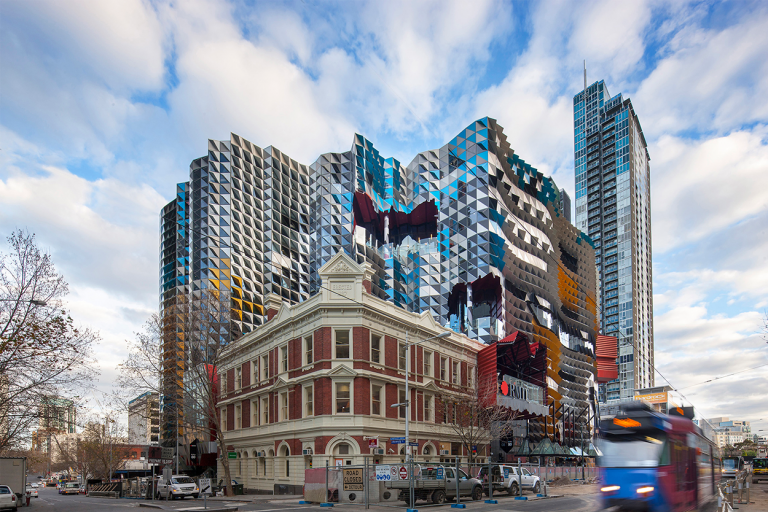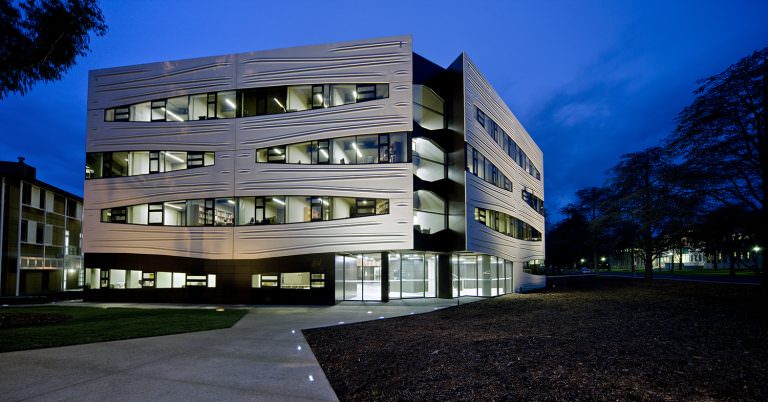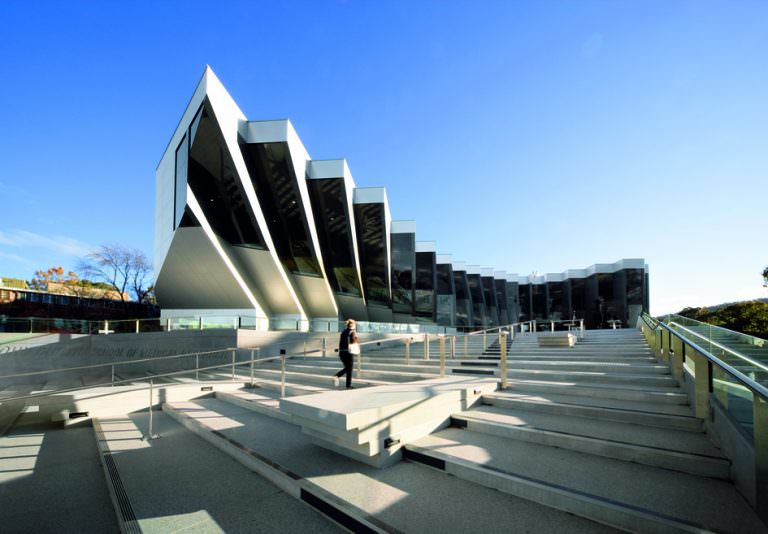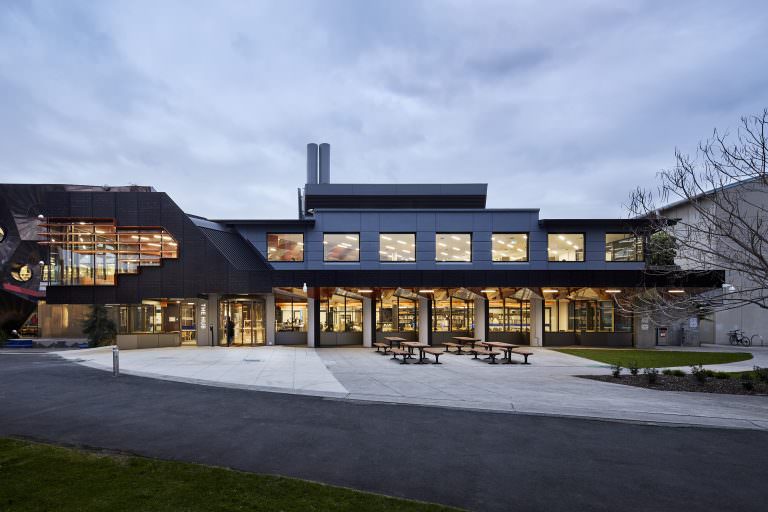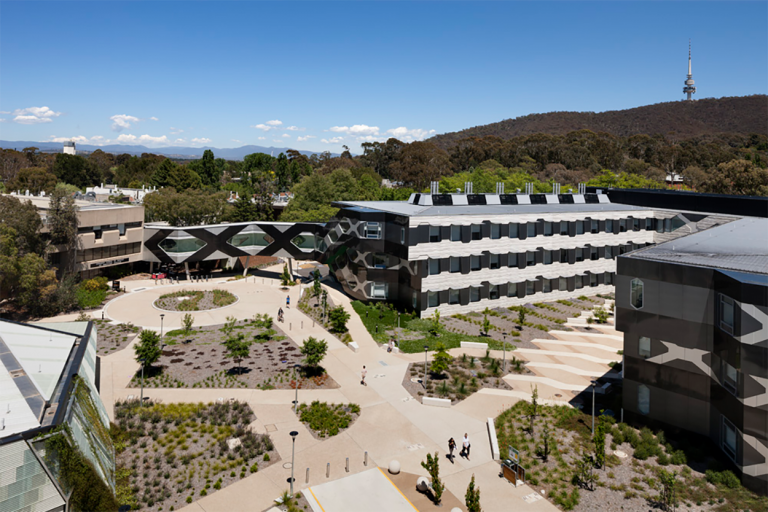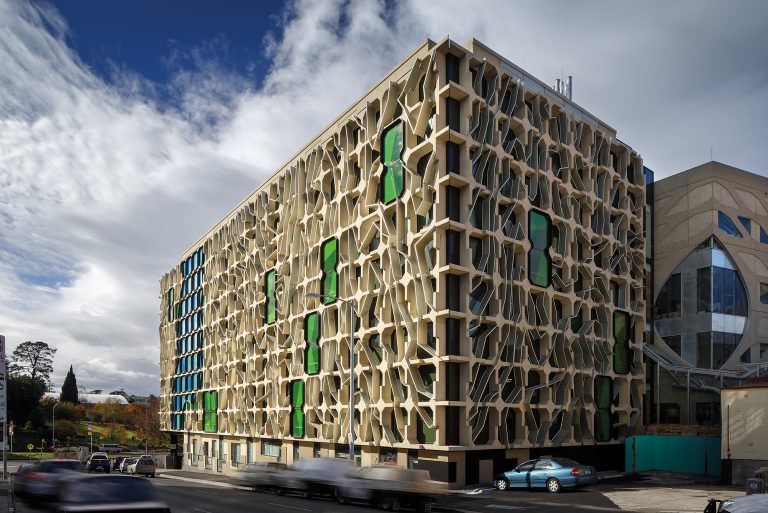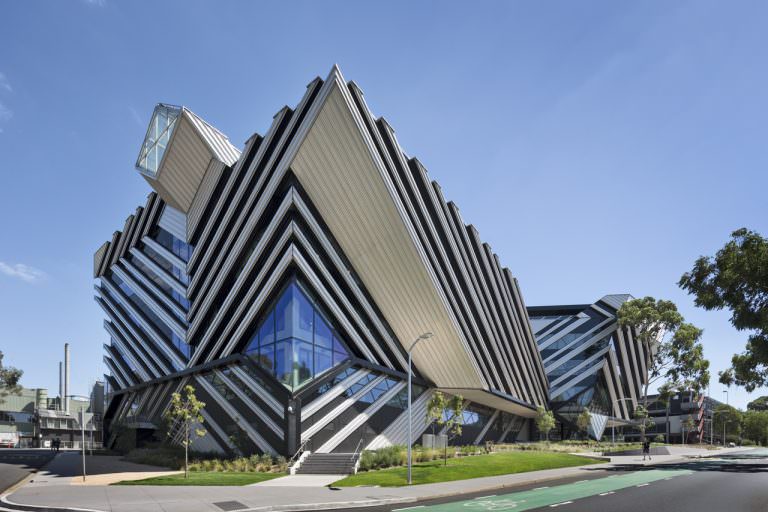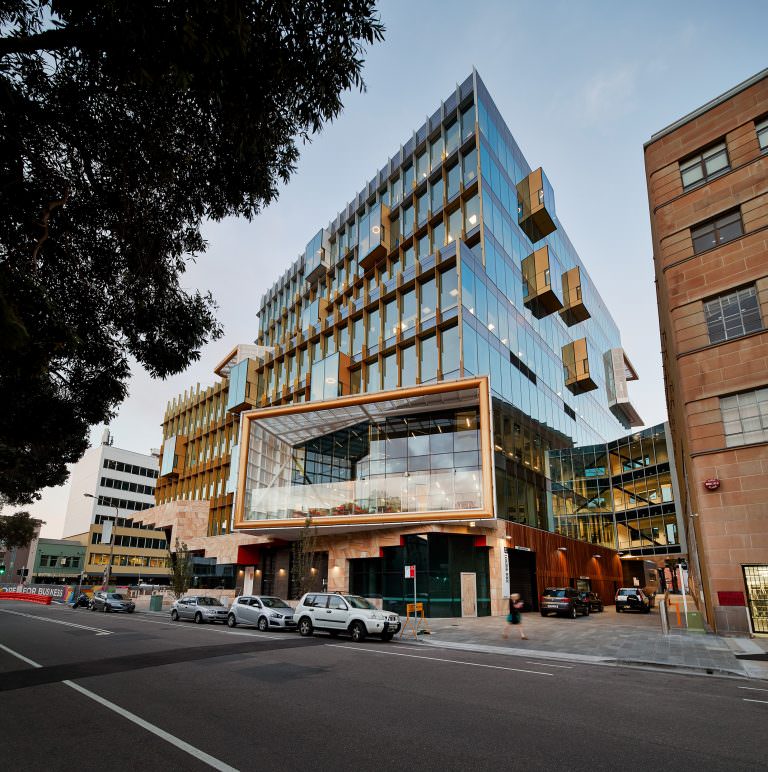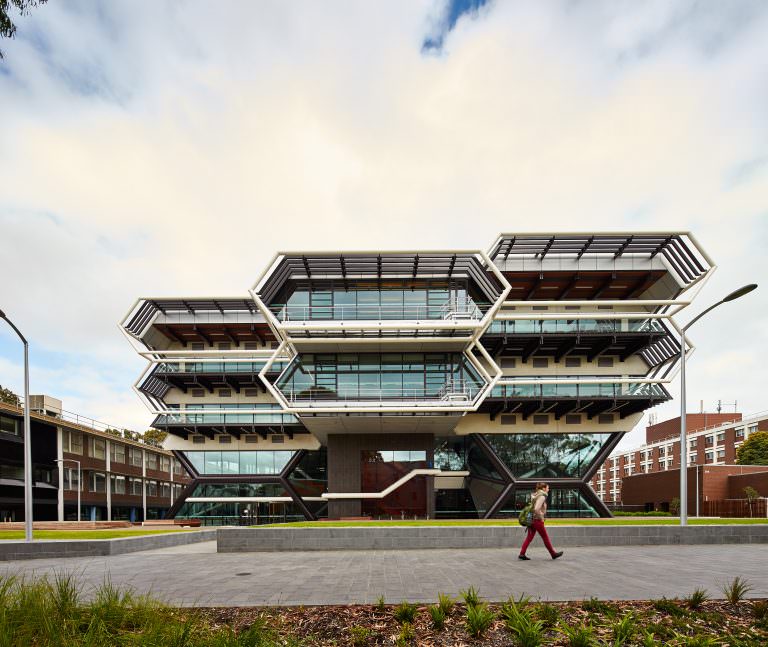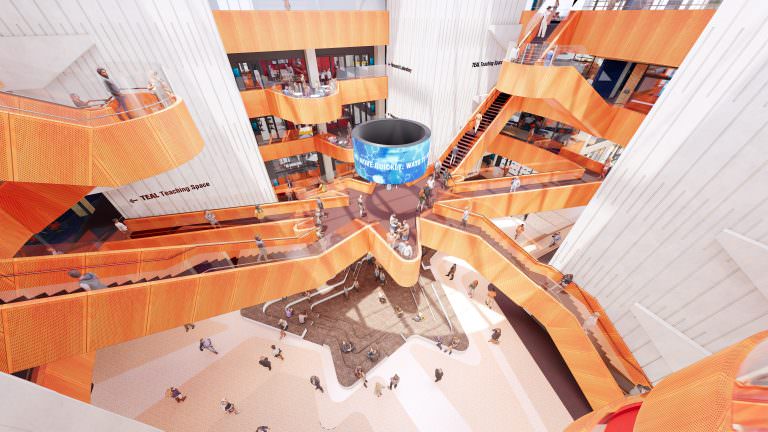Collaboration breeds thoughtful design
Integrating Indigenous design elements into Midland Campus was a key element of the brief. The project lent itself to collaboration with Curtin University’s Centre of Aboriginal Studies as the site sits on Noongar country. United on our vision to create a building that embodies Indigenous culture, we worked together to create a community space with Indigenous influences throughout. Co-design with the Centre of Aboriginal Studies ensured cultural narratives are present in art, signage and landscape, supporting everyday learning. The purpose of our collaborative working methods was to reconnect the community to Indigenous culture and create an environment that consciously teaches students to learn with empathy.
The Midland Campus’ design, artwork, landscape and signage reflect a strong connection to the Whadjuk Noongar people. The concrete entry sign in the public forecourt establishes the importance of Indigenous culture from the first encounter, reading ‘Kya Wandju Wandju’ (Welcome). Inside the entry foyer, a ‘Welcome to Country’ presented in English and Noongar dialect is etched into the timber wall panels. Bilingual wayfinding and learning graphics embed language across floors and disciplines.
Other cultural details include natural local materials, bilingual signage in Nyungar and English throughout the building including wayfinding and labelled anatomy imagery, significant Indigenous public art, medicinal planting, a dedicated yarning circle, a medicinal garden and totems and stories from local Elders in Nyungar and English about native fauna. These measures foster cultural safety for students, staff and visitors.
Public artwork, commissioned from Milne and Stonehouse and Indigenous artist Justin Martin, tells the story of aboriginal innovation through the gathering of honey. It is visually represented by a large scale (12m x 6m) painting ceramically printed on the northern glass façade, and the hanging of a golden beehive, titled Ngook, under the entry soffit as a symbol of medical ingenuity of the first Nations people.


